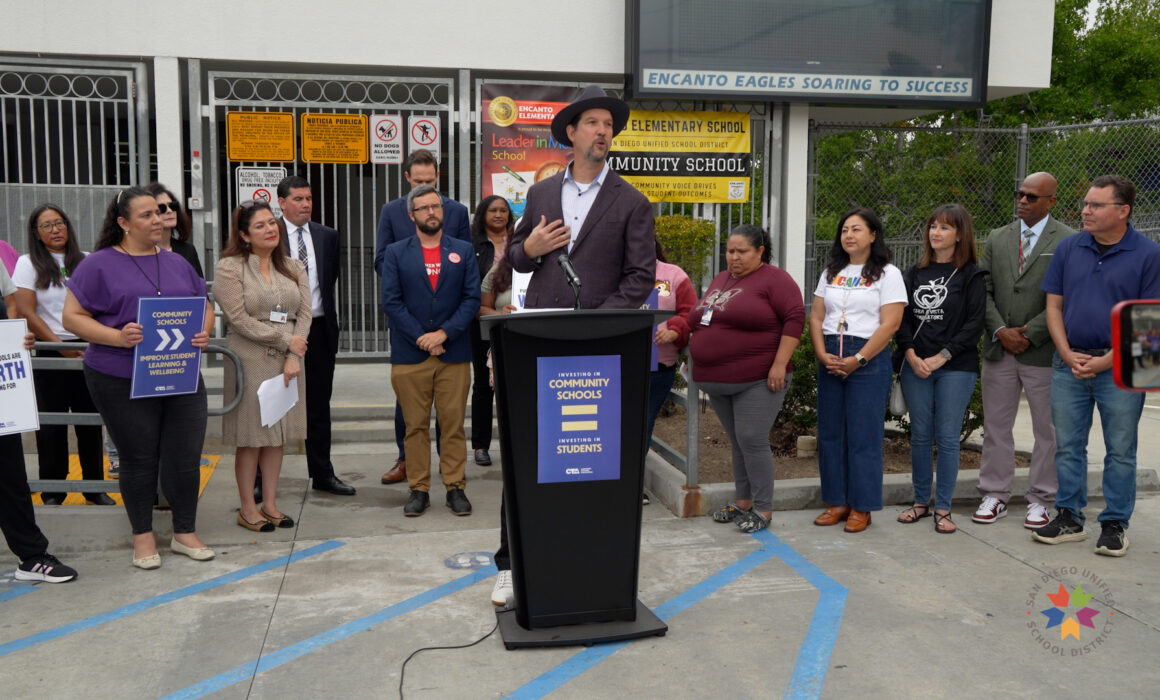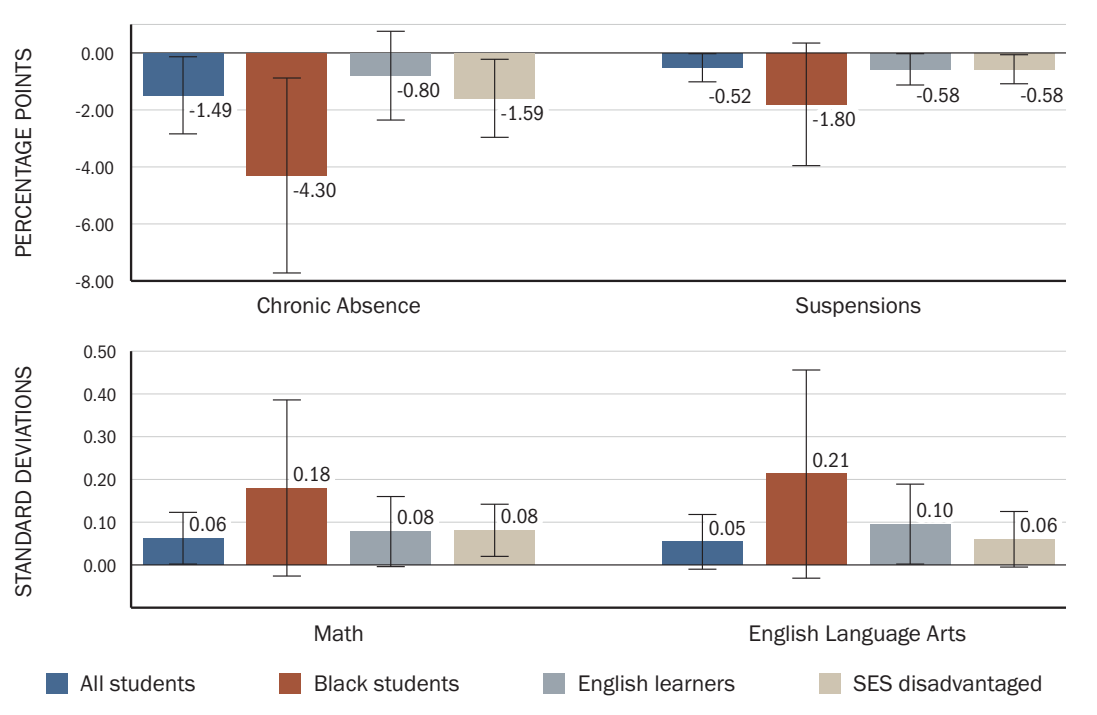
Our union’s ongoing fight to support and grow the community schools movement is making a big difference: A new report from the Learning Policy Institute (LPI) finds that community schools in California in the past year have positively impacted students and families in multiple ways. In addition to marked improvement in chronic absenteeism and suspension rates, students have made major gains in academic achievement – particularly among historically underserved students.
“At a time when public education is under attack at the federal level, in California we are investing in models that work and organizing together for the schools our students deserve.” – CTA President David Goldberg
“Community Schools Impact on Student Outcomes: Evidence From California” shared encouraging results from LPI’s research of the first cohort of California Community Schools Partnership Program (CCSPP) grantees with a full year of student outcome data. The evidence shows the state’s investment in community schools is already creating transformative change, even in a short time.
“This report underscores what we already see happening at community schools across California: This is a model for public education that works,” said CTA President David Goldberg at the press conference in September announcing the findings. “Our union has been proud to advocate for historic investment in this model that brings educators, parents, students, community organizations and administrators to the same table to make decisions about their school together.
“At a time when public education is under attack at the federal level, in California we are investing in models that work and organizing together for the schools our students deserve.”
Our union has been deeply committed to helping grow and support California’s community schools, a partnership with the state, school districts, students, families and communities, even before the CCSPP investment of $4.1 billion in 2021. CCSPP is the nation’s largest community schools initiative, now serving more than 2,500 schools. Community schools’ shared governance component is crucial to their success, and our union has been diligent across the state in fighting to get school district administrators to embrace this critical collaboration.
As Community Schools Coordinator Clarissa Elmore said at the press conference, held at Encanto Elementary (one of 35 community schools in the San Diego Unified School District), “Being a community school means inviting parents to the table – not just as participants, but as thought partners and leaders.”
Photo caption: CTA President David Goldberg speaks at the press conference announcing results of the community schools report by the Learning Policy Institute. Parents, educators, San Diego Education Assn. President Kyle Weinberg (in red T-shirt) and CTA Board Member Kisha Borden (to Goldberg’s right) also participated in the event, which was held at Encanto Elementary School in San Diego.
Major Findings of the LPI Report

Community Schools’ Effects: This chart shows the gains made by historically underserved students at community schools in CCSPP’s first cohort in the first year. Outcomes are shown by student group (all students, Black students, English learners and socioeconomically disadvantaged).
The LPI report shows how California’s investment in community schools has significantly impacted student attendance, reduced suspension rates in schools and increased academic achievement scores, especially for students who have been historically underserved including Black students, English learners, and students from low-income backgrounds. Major findings:
- Compared to matched comparison schools, community schools’ chronic absence rates dropped by 30%, suspension rates fell by 15% and academic achievement rose.
- Black students and English learners saw gains equivalent to about 43 extra days of learning in math and 36 in English language arts.
- The strongest academic improvements occurred in schools with the greatest progress in attendance.
- Results suggest that community schools’ holistic approach can reduce educational inequities and improve multiple student outcomes.
“The early results from the first cohort of schools served by the California Community Schools Partnership Program (CCSPP) are promising,” said Walker Swain, a principal researcher at LPI and lead author of the new report. “In just the first full year of implementation, CCSPP schools noticeably outperformed similar schools that did not receive grant funding, making significant reductions in chronic absence and suspension rates, along with improvements in student achievement; especially for historically underserved students.
“Our results echo findings from a similar RAND study of New York City community schools, where larger gains unfolded over a longer period of time. Together, these studies suggest community schools are a scalable tool for addressing educational inequalities and promoting deeper learning.”
For the full report, visit learningpolicyinstitute.org. Find information and resources about CTA’s work with community schools – and coverage of community schools by the Educator magazine – at cta.org/communityschools.
The Discussion 0 comments Post a Comment